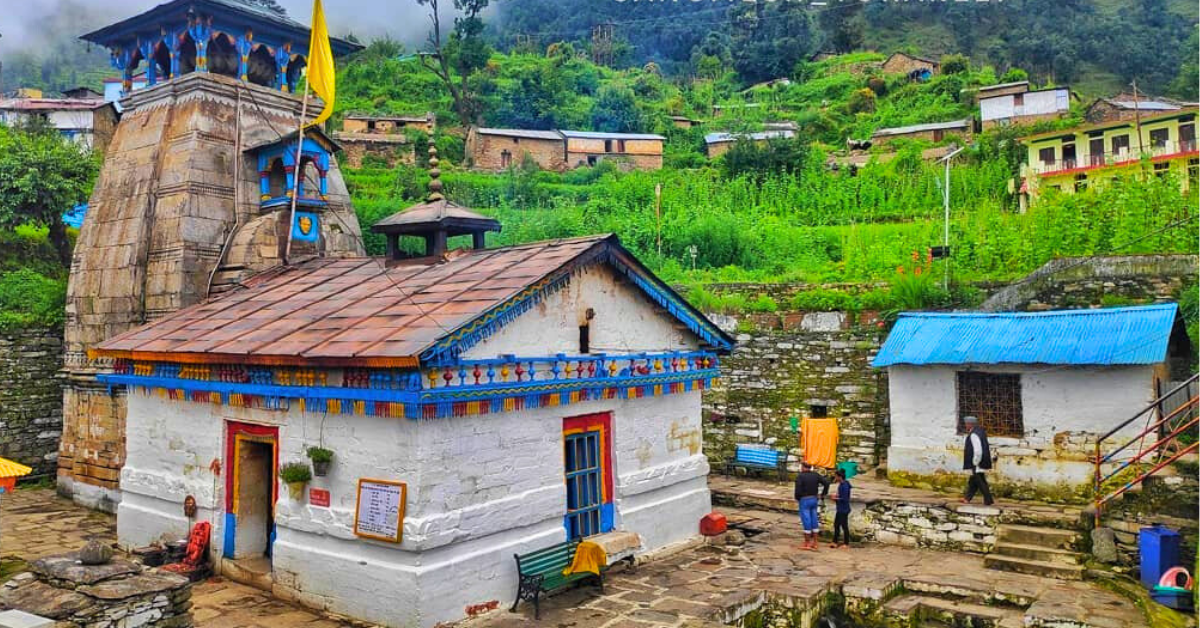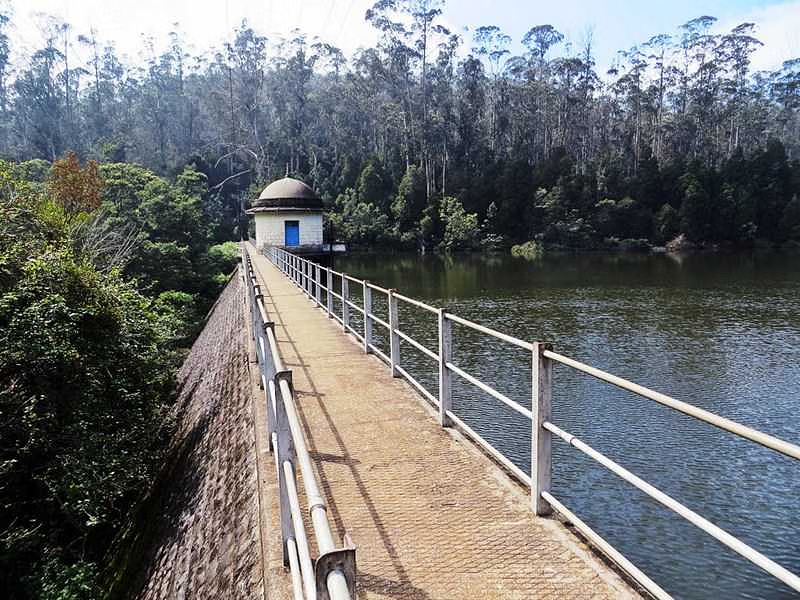Planning a sacred journey to the divine wedding venue of Lord Shiva and Goddess Parvati? Understanding the best time to visit Triyuginarayan Temple can transform your pilgrimage from a challenging trek into a spiritually enriching experience. Located in the pristine Rudraprayag district of Uttarakhand at an altitude of 1,980 meters, this ancient temple holds immense religious significance as the eternal wedding venue of the divine couple.
This comprehensive guide reveals optimal visiting seasons, detailed travel routes, weather patterns, and essential pilgrimage tips to help you plan the perfect spiritual journey to this sacred Himalayan destination. Many devotees combine their temple visit with other Uttarakhand spiritual destinations through Uttarakhand tour packages from Mumbai for a complete divine experience.
Table of Contents
Best Time to Visit Triyuginarayan Temple: Climate and Seasonal Overview

Nestled in the Garhwal Himalayas, Triyuginarayan Temple experiences a typical mountain climate with distinct seasonal variations that significantly impact accessibility and pilgrimage comfort. The best time to visit Triyuginarayan Temple depends on weather conditions, road accessibility, and personal preferences for crowd levels and spiritual atmosphere. Understanding Triyuginarayan Temple weather patterns helps pilgrims plan their journey effectively, ensuring safe travel and comfortable accommodation. The temple’s high-altitude location creates unique seasonal experiences, from snow-covered winter landscapes to lush monsoon greenery and pleasant autumn conditions.
Seasonal Climate Overview at Triyuginarayan Temple
| Season | Duration | Triyuginarayan Temple Weather | Accessibility | Ideal For |
|---|---|---|---|---|
| Spring | March-May | 10-20°C | Good road access | Pleasant weather, clear views |
| Summer | June-August | 15-25°C | Monsoon challenges | Lush greenery, moderate crowds |
| Autumn | September-November | 5-18°C | Excellent access | Perfect weather, festivals |
| Winter | December-February | -5 to 10°C | Limited access | Snow views, solitude |
The temple’s location in the Mandakini river valley creates a unique microclimate where temperatures can vary significantly between day and night, especially during winter months when the difference can exceed 15 degrees Celsius.
Perfect Timing: Month-by-Month Analysis for the Best Time to Visit Triyuginarayan Temple
Determining the best time to visit Triyuginarayan Temple requires careful consideration of weather patterns, accessibility, and spiritual significance of different seasons. Each period offers unique advantages for pilgrims, from comfortable trekking conditions to profound spiritual experiences during festivals. Understanding monthly variations helps devotees align their visit with personal preferences and physical capabilities. The temple remains accessible most of the year, though winter conditions can create challenges for elderly pilgrims or those with mobility concerns.
1. March to May: Spring Pilgrimage Season (Ideal Time)
Spring emerges as one of the best times to visit Triyuginarayan Temple when comfortable temperatures and clear mountain views create perfect pilgrimage conditions.
Spring emerges as one of the best times to visit Triyuginarayan Temple when comfortable temperatures and clear mountain views create perfect pilgrimage conditions. Triyuginarayan Temple weather during spring ranges from 10-20°C, offering pleasant daytime conditions for temple visits and nearby exploration.
Spring Advantages:
- Crystal clear mountain views and pristine air quality
- Comfortable temperatures for elderly pilgrims and families
- Excellent road conditions and reliable transportation
- Blooming rhododendrons and alpine flowers enhance natural beauty
- Ideal conditions for photography and meditation
Considerations:
- Moderate tourist crowds, especially during April-May
- Advance accommodation booking recommended
- Pack layers for temperature variations between day and night
2. June to August: Monsoon Season (Challenging but Rewarding)
Monsoon season presents both challenges and unique spiritual experiences for adventurous pilgrims seeking divine connection amidst nature’s raw power.
Monsoon Characteristics:
- Frequent landslides and road blockages possible
- Enhanced natural beauty with waterfalls and greenery
- Fewer crowds provide intimate spiritual experiences
- Cool, refreshing weather with temperatures 15-25°C
3. September to November: Peak Pilgrimage Season
Autumn stands as the optimal period offering perfect weather, excellent accessibility, and significant religious festivals for most pilgrims.
Autumn Highlights:
- Perfect weather with temperatures ranging 5-18°C
- Crystal clear mountain visibility after monsoon
- Diwali and other festivals add spiritual significance
- Excellent road conditions and transportation reliability
- Ideal for combining with Kedarnath and Badrinath visits
4. December to February: Winter Spiritual Retreat
Winter offers complete solitude and snow-covered serenity for devoted pilgrims seeking profound spiritual experiences in challenging conditions.
Winter Experience:
- Snow-covered temple creates mystical atmosphere
- Extremely limited crowds provide profound spiritual experiences
- Challenging weather tests devotion and determination
- Temperatures can drop below freezing at night
How to Reach Triyuginarayan Temple: Transportation Options
Understanding how to reach Triyuginarayan Temple is crucial for planning a successful pilgrimage, as the journey involves multiple transportation modes and careful timing. The temple’s remote Himalayan location requires strategic planning, especially during challenging weather conditions. Most pilgrims combine their temple visit with other sacred destinations like Kedarnath, making it essential to understand interconnected travel routes. Proper route planning ensures safety, comfort, and spiritual satisfaction during your divine journey.
Dehradun to Triyuginarayan Temple: Primary Route
The most popular and well-connected pilgrimage route covering 220 kilometers through scenic mountain roads with excellent connectivity.
Complete Route: Dehradun to Rishikesh (45 km) → Rishikesh to Rudraprayag (140 km) → Rudraprayag to Guptkashi (35 km) → Guptkashi to Triyuginarayan (12 km). Total journey takes 7-8 hours by road.
Many pilgrims enhance their journey by including Rishikesh tour packages from Mumbai to experience yoga and spiritual practices before reaching the temple.
Transportation Options:
- By Air: Jolly Grant Airport, Dehradun (230 km from temple) with regular flights from major cities
- By Train: Rishikesh Railway Station (185 km) or Haridwar Railway Station (200 km)
- By Road: Direct bus services from Delhi, Dehradun, and Haridwar, or private taxi hire for comfort and flexibility
Triyuginarayan Temple History and Wedding Significance

The Triyuginarayan Temple history spans thousands of years, rooted in ancient Hindu scriptures and puranic traditions that establish it as one of Hinduism’s most sacred wedding venues. According to ancient texts, this temple witnessed the celestial marriage of Lord Shiva and Goddess Parvati, making it eternally significant for devotees seeking marital blessings. The temple’s most remarkable feature is the eternal fire (Akhand Dhuni) that has burned continuously for centuries, believed to be the same fire that witnessed the divine wedding. This sacred flame serves as a testament to eternal love and divine union, attracting couples seeking blessings for their marriages.
Triyuginarayan Temple wedding ceremonies hold immense spiritual significance, as couples believe that marriages conducted here receive the same divine blessings that graced Lord Shiva and Parvati’s union. The eternal fire serves as the sacred witness to wedding vows, providing a unique spiritual dimension that modern wedding venues cannot match. Traditional Vedic rituals are performed around the eternal fire, with temple priests conducting ceremonies that include divine blessings, sacred ash distribution, and community prayers for marital harmony.
Triyuginarayan Temple Weather: Seasonal Planning
Understanding Triyuginarayan Temple weather patterns is essential for planning a comfortable and safe pilgrimage, as mountain weather can change rapidly and significantly impact travel conditions. The temple’s high-altitude location creates distinct seasonal characteristics that influence accessibility, comfort, and spiritual experience. Weather conditions directly affect accommodation availability, transportation reliability, and overall pilgrimage satisfaction. Proper weather planning ensures pilgrims can focus on spiritual practices rather than weather-related challenges during their sacred journey.
Spring (March-May): Daytime 15-20°C, nighttime 5-10°C with clear skies and excellent mountain visibility.
Summer (June-August): Daytime 18-23°C, nighttime 12-16°C with monsoon rainfall and lush landscapes.
Autumn (September-November): Daytime 12-18°C, nighttime 2-8°C with crystal clear post-monsoon visibility.
Winter (December-February): Daytime 5-12°C, nighttime -5 to 2°C with possible snow and limited accessibility.
Essential Pilgrimage Planning and Tips
Successful pilgrimage planning requires understanding practical aspects beyond just determining the best time to visit Triyuginarayan Temple, including accommodation options, local customs, and safety considerations. Proper preparation ensures pilgrims can focus on spiritual practices while maintaining comfort and security throughout their journey. Understanding local customs and temple protocols enhances the overall pilgrimage experience and shows proper respect for this sacred destination.
Accommodation: Guptkashi offers government guesthouses and private hotels (₹800-4,000 per night) with basic amenities. Temple area has limited basic lodging options.
Packing Essentials: Layered clothing for temperature variations, waterproof jacket, comfortable trekking shoes, warm woolens, prayer books, and temple offerings.
Health and Safety: Gradual acclimatization for altitude, adequate hydration, basic medications, travel in groups during challenging weather, and local guide hiring for unfamiliar routes.
Temple Rituals: Morning aarti (6:00 AM), midday worship (12:00 PM), evening aarti (7:00 PM). Participate in sacred fire circumambulation, offer prayers for marital harmony, and receive blessed ash from eternal fire.
Many pilgrims combine their visit with other Uttarakhand destinations using Kedarnath tour packages from Mumbai or extend their journey with Nainital tour packages from Mumbai for comprehensive spiritual and scenic experiences.
Conclusion
The best time to visit Triyuginarayan Temple ultimately depends on your priorities: comfortable weather (September-November), spiritual solitude (winter months), or budget considerations (monsoon season). Each season offers unique advantages, from perfect autumn conditions to mystical winter snow experiences.
Proper planning ensures a meaningful pilgrimage experience at this sacred wedding venue of Lord Shiva and Parvati. You can visit us at VDP Travels, Neighbourhood Complex, F- 5, near SBI Bank, Sector 4, Nerul, Navi Mumbai, Mumbai, Maharashtra 400706. For comprehensive Triyuginarayan Temple pilgrimage packages with expert guides and seamless Uttarakhand travel arrangements, call +91 99675 18405, or visit VDP Travels.
Best Time to Visit Triyuginarayan Temple – FAQs
What is the best time to visit Triyuginarayan Temple for comfortable weather?
September to November offers the most comfortable weather with temperatures 5-18°C, excellent visibility, and stable road conditions for easy temple access.
How to reach Triyuginarayan Temple from Dehradun?
Dehradun to Triyuginarayan Temple is 220 km via Rishikesh-Rudraprayag-Guptkashi route, taking approximately 7-8 hours by road with regular taxi and bus services available.
What is special about Triyuginarayan Temple wedding ceremonies?
Triyuginarayan Temple wedding ceremonies are conducted around the eternal fire that witnessed Lord Shiva and Parvati’s divine marriage, providing unique spiritual blessings for couples.
What is the Triyuginarayan Temple history and significance?
Triyuginarayan Temple history dates back over 1000 years as the sacred venue where Lord Shiva married Goddess Parvati, with an eternal fire burning continuously since the divine wedding.
What is the Triyuginarayan Temple weather like during winter?
Triyuginarayan Temple weather in winter ranges from -5°C to 10°C with possible snowfall, creating mystical beauty but challenging accessibility requiring proper winter gear.
Can I visit Triyuginarayan Temple during monsoon season?
Yes, though monsoon visits require flexibility due to landslides and road blockages, while offering lush green landscapes and fewer crowds for intimate spiritual experiences.
What should I pack for visiting Triyuginarayan Temple?
Pack layered clothing, waterproof jacket, comfortable trekking shoes, warm woolens for night temperatures, and spiritual items like prayer books and temple offerings.
How many days should I allocate for Triyuginarayan Temple visit?
Plan minimum 2-3 days including travel time from Dehradun/Rishikesh, with additional days if combining with Kedarnath or other nearby pilgrimage destinations.
Is Triyuginarayan Temple accessible for elderly pilgrims?
Yes, during favorable weather seasons (March-May, September-November) with proper planning, though winter and monsoon visits may be challenging for elderly pilgrims.
What are the accommodation options near Triyuginarayan Temple?
Accommodation available in Guptkashi (12 km away) ranging from budget dharamshalas (₹300-800) to mid-range hotels (₹2000-4000), with limited basic options at temple area.





